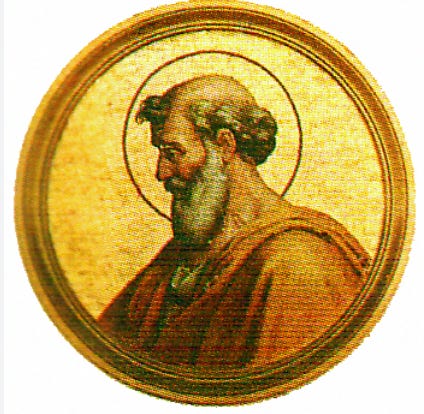4th September: St Boniface
St Boniface was a strong supporter of St Augustine in his opposition to Pelagianism, and when letters were sent him by Pelagians slandering their opponent, he forwarded them to Augustine
ST BONIFACE I, POPE (A.D. 422)
It is a piece of hagiographical common form to say of a holy man raised to the episcopate that he accepted the office with the greatest reluctance; doubtless they (and lesser men) generally did, though frequently there is no evidence either way. But in the case of Boniface I it is certainly true, for he was an old man and he knew that he was faced by a rival, the antipope Eulalius. On the same day, or even the day before, that Boniface was chosen pope by the senior clergy of Rome, a faction, chiefly of deacons, seized the Lateran and elected Eulalius, who had considerable support behind him. The ensuing disorder lasted fifteen weeks, and it required the intervention of the Emperor Honorius before Boniface could take possession of his see.
This pope combined a peaceable disposition with firmness, especially in resisting the encroachments of the Eastern emperor and the Constantinopolitan see, and in other jurisdictional questions. But while reiterating that “the blessed apostle Peter received by our Lord’s word and commission the care of the whole Church”, he was careful to vindicate the rights of bishops against the encroachments of papal vicars. St Boniface was a strong supporter of St Augustine in his opposition to Pelagianism, and when letters were sent him by Pelagians slandering their opponent, he forwarded them to Augustine for his information. As a mark of his respect and gratitude St Augustine dedicated to the pope the work he wrote in reply to his critics, and sent it to Rome by the hand of St Alipius.
St Boniface I died in 422, after being pope for not quite four years. He was buried in the cemetery of Maximus on the New Salarian Way, close to the chapel he had built over the grave of St Felicitas, to whose memory he had a warm devotion.



